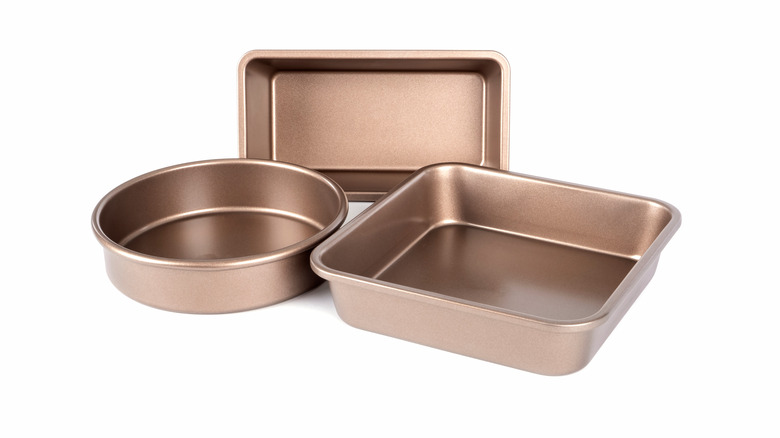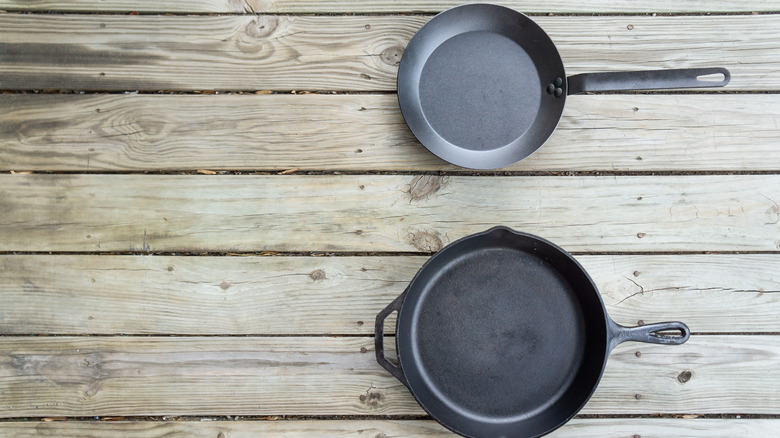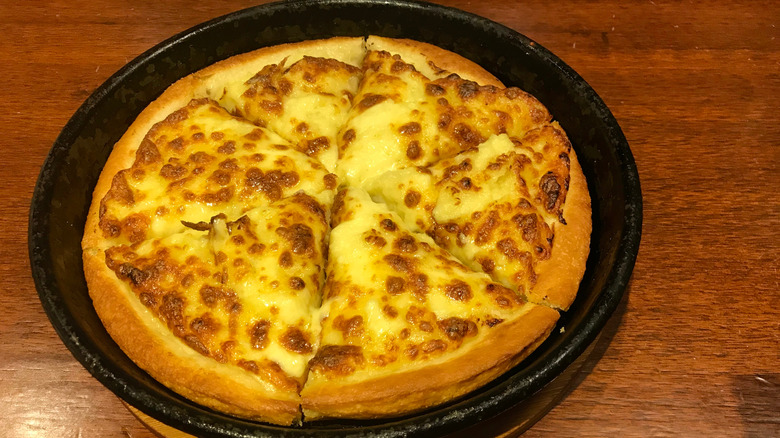Why Carbon Steel Pans Are So Popular In Chefs' Kitchens
With all the cookware options available to chefs, it's a mystery why carbon steel pots and pans are just now claiming rightful spots in home kitchens. The allure of these resilient metal kitchen warriors has certainly been no secret to professional restaurant chefs, many of who have been frying, baking, roasting, sautéing, and searing with this wonder material for a very long time.
America's Test Kitchen reveals that even Julia Child slipped some carbon steel pieces into her well-known collection of copper pans and that home chefs in Europe caught onto the phenomenon well before their counterparts "across the pond."
Like the prized carbon steel knives tucked into cutting blocks across the globe, carbon steel pans consist of an iron/carbon mixture: roughly 98% to 99% iron and 1% to 2% carbon, explains Wasabi Knives. The extraordinary strength of carbon steel even proved its mettle centuries ago as a material of choice for Japanese swordsmiths, according to Monroe Engineering. It's also used for making automobile parts, tools, and construction components.
Bringing that strength into the kitchen is a no-brainer, especially with the multi-faceted characteristics and applications. There are, however, a few things to know about cooking with carbon steel pots and pans.
From stovetop to oven, carbon steel can handle high heat and delicate foods
Versatility is the crowning attribute of carbon steel cookware, standing up to high heat levels and most any heating surface, including stovetops, ovens, broilers, pizza ovens, and even open flames, notes Made In. It can reportedly handle heat as high as 1200 degrees Fahrenheit, but there's rarely a need for that unless broiling or barbecuing over hot flames. The material quickly reaches and maintains the required heat of almost any recipe, so medium heat works well.
Carbon steel pans, particularly frying pans, are often compared to cast iron skillets — without the wrist-wringing heaviness. America's Test Kitchen shares that a lower amount of carbon in carbon steel makes it less prone to brittleness than cast iron, allowing thinner, lighter construction.
Like with cast iron, foods cooked in carbon steel can stick unless you take the extra step of seasoning the pan. Once that's achieved, it's easy to cook even delicate items such as eggs, fish, and vegetables (via MasterClass). Fortunately, transforming these pans into nonstick workhorses takes one initial seasoning, and then routine cooking will build up the pan's patina for long-term durability.
Seasoning carbon steel yields delicious results
Patina is simply a layer "that is gradually produced over time on cast iron cookware that creates an easy-release surface on the base of a pan" (per Le Creuset). It occurs when the cooking process releases fats and oils onto the heated base of the pan. Since professional chefs' kitchens get a whole lot of use, carbon steel pans build up the seasoned patina pretty quickly. But you can jumpstart the process with an initial seasoning process.
Brand-new carbon steel pans may arrive with a protective coating to keep rust from accumulating during the interval from factory to your home kitchen. Be sure to remove that layer per the manufacturer instructions, cautions MasterClass. Then it's time for heating, oiling, wiping, and coating.
Get some air circulating because things might get a bit smoky. Make sure the pan is dry, and place it on a stove burner at medium-high heat. Using a paper towel soaked with a few drops of canola or vegetable oil, wipe the base of the pan to transfer the oil. Let it heat for about 10 more minutes, then repeat the process three times.
Don't be surprised if you end up with a dark or black tone on the pan's cooking surface — that means it's seasoned and ready for slip-sliding some eggs, stir-frying your favorite Thai dish, or even baking pan pizza without sticking.


